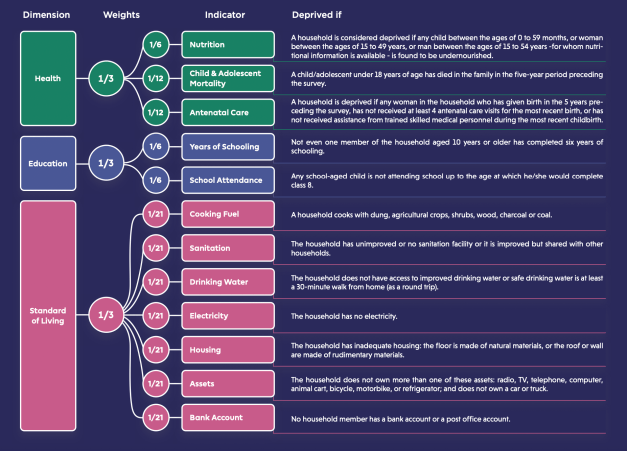-
National MPI is a new Poverty index developed by NITI Aayog.
-
It seeks to measure poverty across its multiple dimensions and in effect complements existing poverty statistics based on per capita consumption expenditure.
-
Niti Aayog has released India’s first National MPI (multidimensional poverty index).
-
Methodology: The index has used the globally accepted and robust methodology developed by the Oxford Poverty and Human Development Initiative (OPHI) and the United Nations Development Programme (UNDP) for Global MPI.
-
Indicators: The index is based on three equally weighted dimensions:
-
Health
-
Education and
-
Standard of living (which in turn are represented by 12 indicators)
-

Source of Data: The index is based on the findings of the fourth National Health Family Survey (2015-16).
What are the key findings of the National MPI?
-
Multidimensionally Poor:
-
Around 25.01% of the Indian population is multidimensionally poor.
-
Bihar has the maximum percentage of the population living in poverty among all the States and the Union Territories, with over 50% of the population in the State identified as “multidimensionally poor”.
-
On the other hand, Kerala registered the lowest population poverty levels (0.71%).
-
Note: The Global MPI had shown 27.9% of India’s population were multidimensionally poor. The country ranked 62nd out of 109 nations on the index.
-
Poverty Criteria: The report took a person spending less than Rs 47 a day in cities and one spending less than Rs 32 a day in villages as poor.
-
